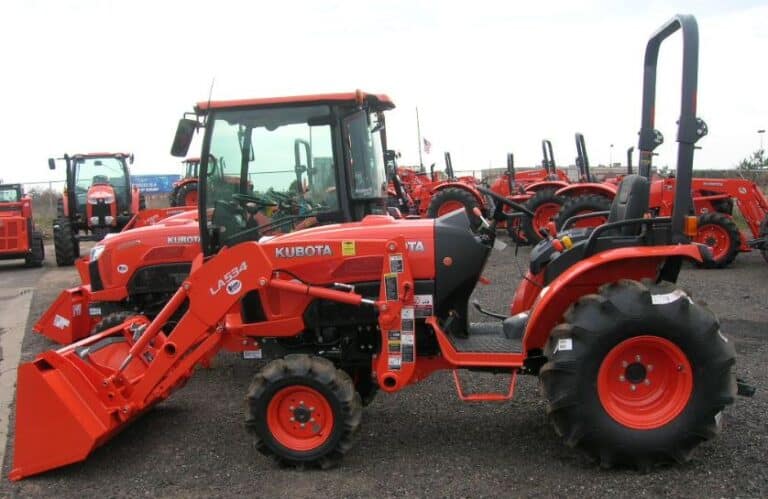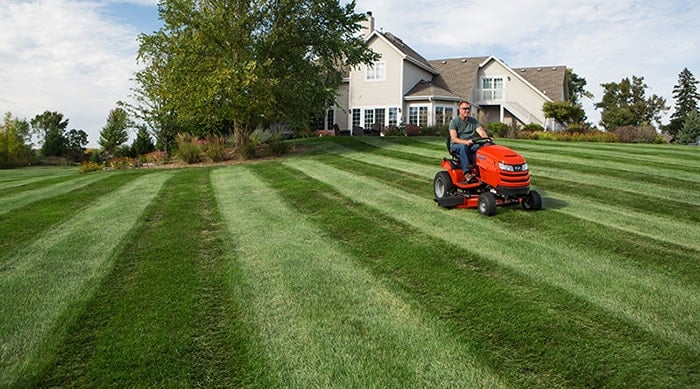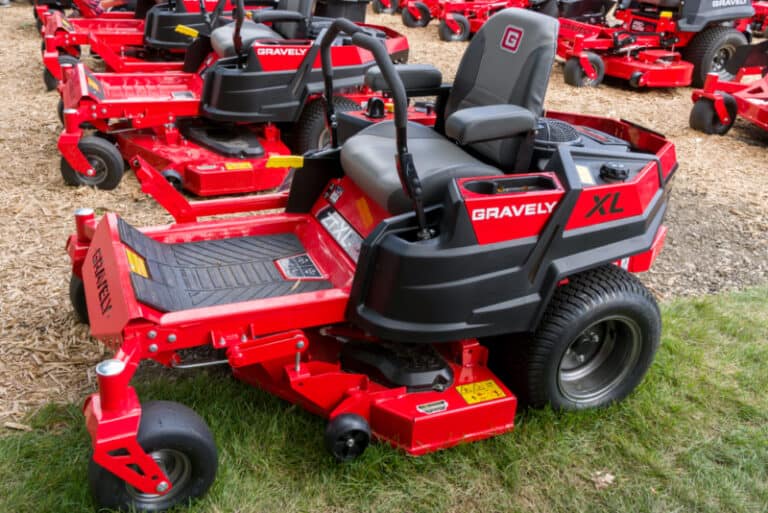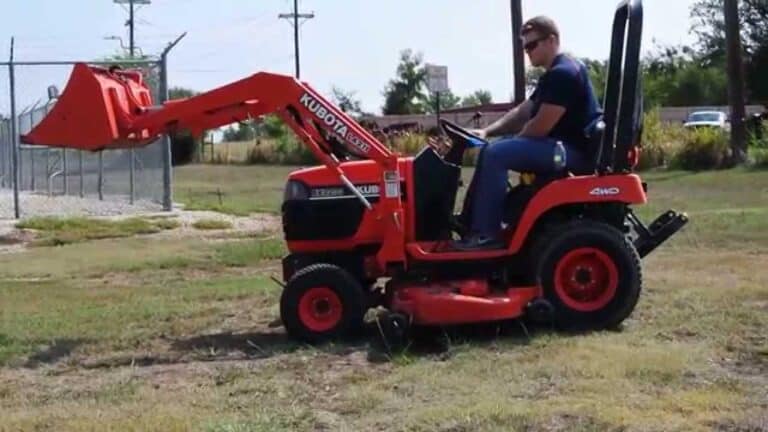Why Your Bad Boy Mower Blades Won’t Engage (And What to Do About It)

The Bad Boylawnmower is one of the most popular on the market now because it provides high-quality power and maximum control over your tractor as you drive. However, no machine is perfect, and the Bad Boy may experience problems with time. For instance, there are times when the blades may not engage, and you find it impossible to operate your tractor properly.
As a result, it is important to know why your bad boy mower blades won’t engage and what you can do about it. In this article, we’ll break down some of the most common reasons why blades don’t operate and what you can do about them.
When possible, we’ll provide step-by-step instructions for managing each issue as needed. In this way, you should feel comfortable handling these repairs yourself.
The Three Most Common Reasons Why Your Bad Boy Mower Blades Won’t Engage
While a lawnmower is a complex machine with many carefully balanced parts, the blade’s operation is surprisingly simple. It connects to a motor via a belt that provides power to the blades that spin them beneath the mower as you drive over your lawn and cut your grass.
- However, the mower blade is also connected to parts like the PTO switch and the clutch, which help control the mower and make it smoothly operational.
- Your Belt is Stretched or Loose – This very common problem can cause your blades to slip and not engage properly. We’ll discuss how you can easily fix this problem yourself without a lot of mechanical experience. Note that experts can help you if you do feel uncomfortable with this step.
- The PTO Switch Knob is Broken – If you replace the belt on your Bad Boy mower and the blades still slip, the PTO switch may be to blame. Sometimes, simply replacing the knob is enough to handle this problem. When this works for you, be glad because it’s the easiest thing to fix on this list by far.
- The Clutch is Damaged – Here’s the big one: severe damage to your clutch that causes it to operate poorly. Unless you have real mechanical experience or have worked with mowers before, this problem is one to handle with an expert. Below, we’ll list reasons why you should let a mechanic do it.
These three problems should cover just about every reason why your Bad Boy mower blades won’t engage. While other problems like issues with the engine or unbalanced blades may also be at play, handling these three steps will fix about 99% of all issues with blade engagement.
Below, we’ll go over each of these issues in more depth and include step-by-step instructions for fixing these issues when possible. For clutch problems, we’ll provide a few reasons why you shouldn’t tackle this job on your own to ensure that you avoid taking this step yourself.
A Simple Test You Can Use for Your Bad Boy Mower
When your Bad Boy mower blades won’t engage, you might be at a loss. You’re not alone because many people get incredibly confused and frustrated when dealing with this problem. Thankfully, there are a few steps that you can take before doing any fixes. Try this simple process first before you replace belts or take your motor to a mechanic. Doing so can give you an idea of what is wrong:
- Start Your Mower – Sit down on your mower and turn the ignition switch. If it starts up just fine, that’s a great sign. Try to engage the blades while you sit there. If it doesn’t work, move on to the next steps.
- Push the Choke – Push the choke if your motor doesn’t start or if your blades don’t engage initially. This step is often a great way to give your mower the kick it needs to start.
- Release the Parking Brake – You can now try to release the parking brake to see if your blades engage. Sometimes, this step can jump the motor into action and get the blades moving.
- Pull the PTO Switch – Try to engage your blades by pulling out the PTO switch. If they start operating, you may not have a problem and can mow your lawn just fine.
- Drive Your Mower – Drive your mower forward and listen to any problems with its operation. If you find that it struggles or the blades don’t engage, it is time to get working.
If you get through this process and your blades engage, you’re in luck! The problem may have been a weird or temporary hiccup and you may not need to get help. However, if your blades don’t engage or they fall back into problematic behaviors that require checking the steps below.
Problem: Issues With the Belt Tightness
As we mentioned above, belt tightness or looseness may be the most common problem with blade engagement. But what exactly causes blades to go loose on a mower? That all depends on a few different things that may impact your mower’s operation over time. These include:
- Putting the belt on too tightly initially, which may cause it to slip while running
- Time causes the belt to stretch slightly as it runs, making it slip even further
- Running the mower too hard and putting strain on the blade as it runs
- Damaging the blade when cutting too many leaves or when rocks get under the system
The trouble with this problem is that it often requires you to get underneath the mower to adjust the belt and get near the blades. Try to avoid putting your hands near the blade while working or take steps to minimize your injury risk. We’ll discuss these appropriate steps in the section below.
Fixing This Common Problem
Thankfully, repairing or replacing a belt is not a complex process for most people. It requires identifying the belt, finding out what is wrong, and carefully replacing it following the guidelines below. Taking these steps is a great way to ensure that your motor runs efficiently:
- Replace the belt if it is too loose or tight on your system
- Put on a shorter belt if the belt is too loose and struggling to run
- Cut your lawn in segments rather than all at once to minimize strain
- Avoid letting your grass grow so long that it might damage the mower
- Add a new belt if your old one is intact but old and lacks elasticity
- Clean up the underside of your mower after every cut
Pay attention to these steps and be careful whenever you get under your mower. Make sure that you take the key out and disconnect the battery fully before working new the blade. If you feel uncomfortable with any of these steps, ask a mechanic to do them for you to avoid injury.
Problem: The PTO Knob Isn’t Working Properly
If the PTO (power take-off) knob isn’t working well, that’s not a bad thing because it is the easiest fix to do on this list. You need to make sure you find the appropriate model number online and then follow these steps to put on the new switch and save yourself the repair costs:
- Carefully remove the switch from the unit using a screwdriver
- Place the old switch to the side or throw it away before moving on
- Open the new switch’s box and carefully fit it on the old switch’s knob
- Tighten it into place and try the knob to see if it works properly
- Move on to the clutch-repair process if your knob doesn’t fix the problem
Problem: Clutch Issues
If you replace the belt and PTO switch on your mower, and it still refuses to start, it’s time to face the fact: you probably have a clutch problem. Nobody wants to deal with clutch issues because they’re tricky to fix without the help of a mechanic and cost the most out of all these problems. However, you shouldn’t try to replace a clutch unless you have a lot of experience working on mowers because:
- The Clutch is Pricey – Unlike belts or knobs, the clutch is likely to cost a few hundred dollars. If you make a mistake installing it, you may have to hire someone to fix it anyway.
- Replacement is Challenging – There are many cables, wires, and other elements that connect to the clutch. If you don’t put them in properly, they could cause a serious malfunction.
- Repairing is Hard and Costly – While you may be able to repair the clutch by replacing some parts, it requires specialized and expensive tools that you may not be able to afford.
- Small Mistakes are Hard to Fix – If you make a mistake when repairing your clutch, trying to fix it yourself is simply not worth the time and energy and will usually require expert help.
That said, if you do have experience working on your mower and have replaced a clutch before, doing so can save you a lot of money. You won’t have to pay for work hours for the mechanic, which will potentially cost you a few hundred dollars or more, depending on the mechanic.
You can also read:






